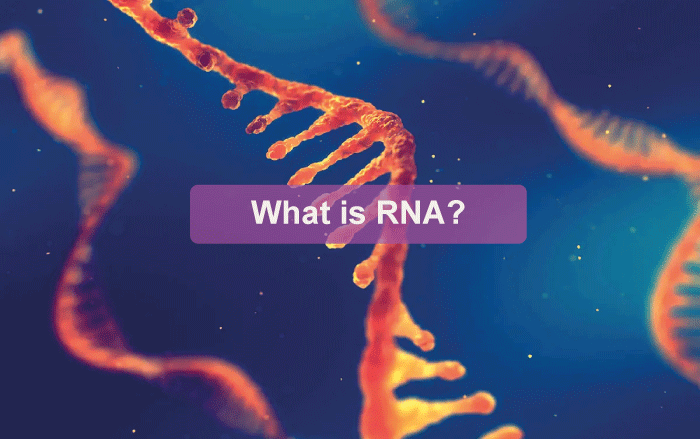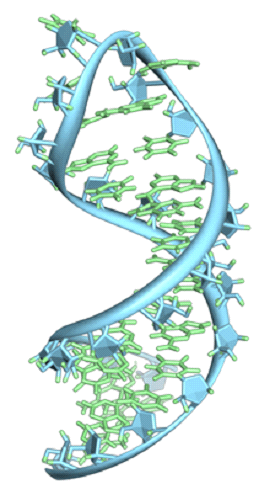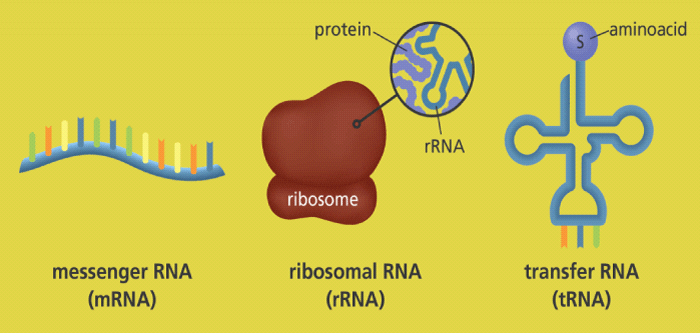RNA DefinitionRNA is a molecule that plays a critical role in gene expression. It is made up of nucleotides containing a ribose sugar, phosphate group and four nitrogenous bases - adenine (A), guanine (G), cytosine (C) and uracil (U). RNA is different from DNA as it has a single-stranded structure and utilizes uracil instead of thymine as one of its four bases. RNA acts as an intermediate between the genetic information encoded by DNA and proteins through transcription. There are different kinds of RNAs, such as tRNA and rRNA, which play crucial roles in protein synthesis. This article explains RNA's definition, structure, types, and functions. An Overview of RNA
According to research, RNA is a molecule that plays an indispensable role in the functioning of the living organism. It is one of the smallest building blocks present in cells which make up organs and tissues. Cells are formed of small structures known as organelles, which work jointly to handle cellular functions. Cells are made up of polymers which are macromolecules consisting of molecules called monomers. Examples of polymers include lipids, proteins, carbohydrates, as well as nucleic acids. Nucleic acids are a type of polymer that store and express genetic information necessary for cellular function and structure. There are two kinds of nucleic acids: Deoxyribonucleic acid (DNA) and Ribonucleic acid (RNA). DNA is double-stranded and stored in the nucleus; its primary purpose is to serve as a blueprint for protein expression by being transcribed into RNA via enzymes such as RNA polymerase. RNA acts as a template for protein synthesis via translation. This process involves decoding the sequence within RNA's nucleotides into amino acids with the help of transfer RNAs (tRNAs) before linking them together to form proteins. Role of RNA in Cells
RNA (Ribonucleic acid) is a fundamental molecule that has essential roles in the cell. The primary function of RNA involves working with DNA to produce proteins which are vital molecules used as enzymes for various cellular processes such as metabolism and transport. However, RNA is important beyond protein synthesis; it also critically regulates gene expression. Each kind of cell must produce its unique collection of specific proteins that work together to perform the functioning of the cells. RNA regulates this procedure by confirming the right genes are represented at the proper time and in appropriate amounts. It is interesting to note the RNA itself can act as an enzyme called a ribozyme, which mediates cellular chemical reactions without requiring any additional protein assistance. This property makes RNA versatile and valuable for many biological processes. Moreover, RNAs are involved in building organelles called ribosomes which are the structures responsible for synthesizing proteins within cells. Ribosomes consist of both protein and RNA components; hence they rely on intact RNAs for efficient protein production. RNA TypesRNA is a crucial molecule that plays an essential role in the transfer of genetic information from DNA to proteins. RNA exists in both prokaryotes and eukaryotes, where it performs numerous functions. Plus, there are three kinds of RNA such as messenger RNA (mRNA), ribosomal RNA (rRNA), and transfer RNA (tRNA). 
1 Messenger RNA (mRNA)Messenger RNA, as the name suggests, carries genetic information from DNA to the site where protein synthesis occurs. It accounts for just 5% of the total cellular RNA but plays a vital role in regulating gene expression. mRNA is heterogeneous in terms of both base sequence and size. The primary function of mRNA is to carry complementary genetic code copied from DNA during transcription, which takes place in the nucleus for eukaryotes and cytoplasm for prokaryotes. The genetic code maintained by mRNA consists of triplets of nucleotides named codons. Each codon determines a particular amino acid needed for protein synthesis; however, one amino acid may be coded by numerous other codons. Although there are 64 possible codons or triplet bases for a genetic code, just 20 amino acids are encoded by all codons. 2 Ribosomal RNA (rRNA)Ribosomal RNAs (rRNAs) make up 80% of RNA in cells and are found in ribosomes. The ribosome is composed of two subunits, the large 50S and small 30S, each with specific rRNA molecules. Small rRNAs belong to the small subunit, while large rRNAs belong to the large subunit. Ribosomes are complex structures formed by the combination of rRNAs, proteins, and enzymes in the cytoplasm. They serve as sites for protein synthesis, building amino acids to create a polypeptide chain while interacting with tRNAs. Though there may be differences in nucleotide numbers between species, ribosome structure and function remain similar across all organisms. The size of small and large rRNAs differ between bacteria and humans, but ribosomes function similarly across all species. Bacterial rRNAs have approximately 1500 and 3000 nucleotides, while human rRNAs have around 1800 and 5000 nucleotides. 3 Transfer RNA (tRNA)tRNA is the shortest type of RNA molecule found in cells, which consists of 75-95 nucleotides. Its primary function is to transfer amino acids during protein synthesis, making it an important part of translation. tRNA molecules transfer amino acids to the growing polypeptide chain during protein synthesis. Each of the 20 amino acids has a corresponding tRNA molecule that attaches with it and brings it to the ribosome. tRNA molecules act as adapter molecules during translation, helping to match codons on mRNA with their corresponding anticodons on tRNA. Their unique cloverleaf structure consists of four arms stabilized by hydrogen bonds and often contains unusual bases due to methylation modifications. Additional RNA TypesRNA is not just involved in protein synthesis but also plays a role in post-transcriptional modification, DNA replication and gene regulation. There are different types of RNA found in various forms of life. 1 Small nuclear RNA (snRNA)snRNA is responsible for converting pre-mRNA into mature mRNA and is typically only about 150 nucleotides long. 2 Regulatory RNAsRNA, or ribonucleic acid, is a crucial molecule that plays a central role in the regulation of gene expression. There are several types of RNA involved in this process, including micro RNA (miRNA), small interfering RNA (siRNA), and antisense RNA (aRNA). Each type of RNA has its own unique characteristics and functions.
3 Transfer-messenger RNA (tmRNA)tmRNA is a molecule found in bacteria and plastids that tags proteins encoded by mRNAs lacking stop codons for degradation, preventing ribosome stalling. 4 Ribozymes (RNA enzymes)RNA molecules can act as enzymes, known as ribozymes, with complex structures and similar features to traditional enzymes. They have active sites, substrate binding sites, and cofactor binding sites, such as metal ions. 5 Double-stranded RNA (dsRNA)dsRNA is a type of RNA that resembles double-stranded DNA and serves as the genetic material for specific viruses. RNA FunctionsRNA is a type of nucleic acid found in all living organisms and plays various roles within cells, including structural support and catalyzing biochemical reactions. There are different types of RNA involved in multiple cellular processes.
ConclusionRNA is a crucial molecule that plays multiple roles in the functioning of living organisms. One of its most significant functions is promoting ribosomes, which are responsible for protein synthesis, to select the appropriate amino acids required for building new proteins in the body.
Next TopicURL Definition
|
 For Videos Join Our Youtube Channel: Join Now
For Videos Join Our Youtube Channel: Join Now
Feedback
- Send your Feedback to [email protected]
Help Others, Please Share









